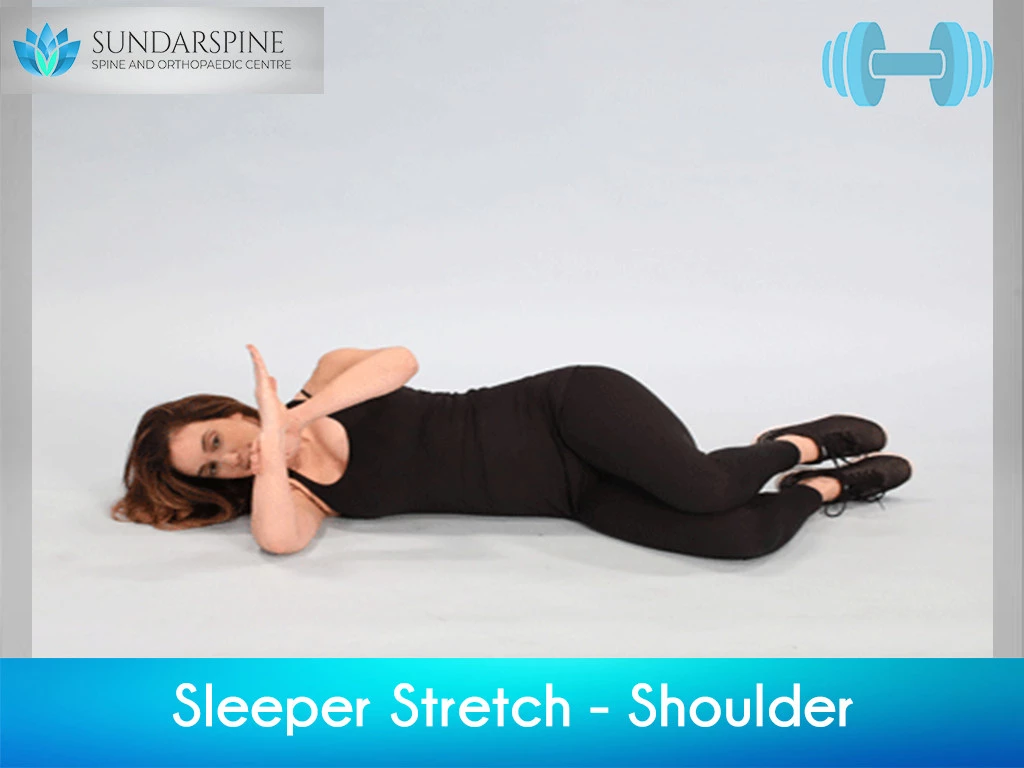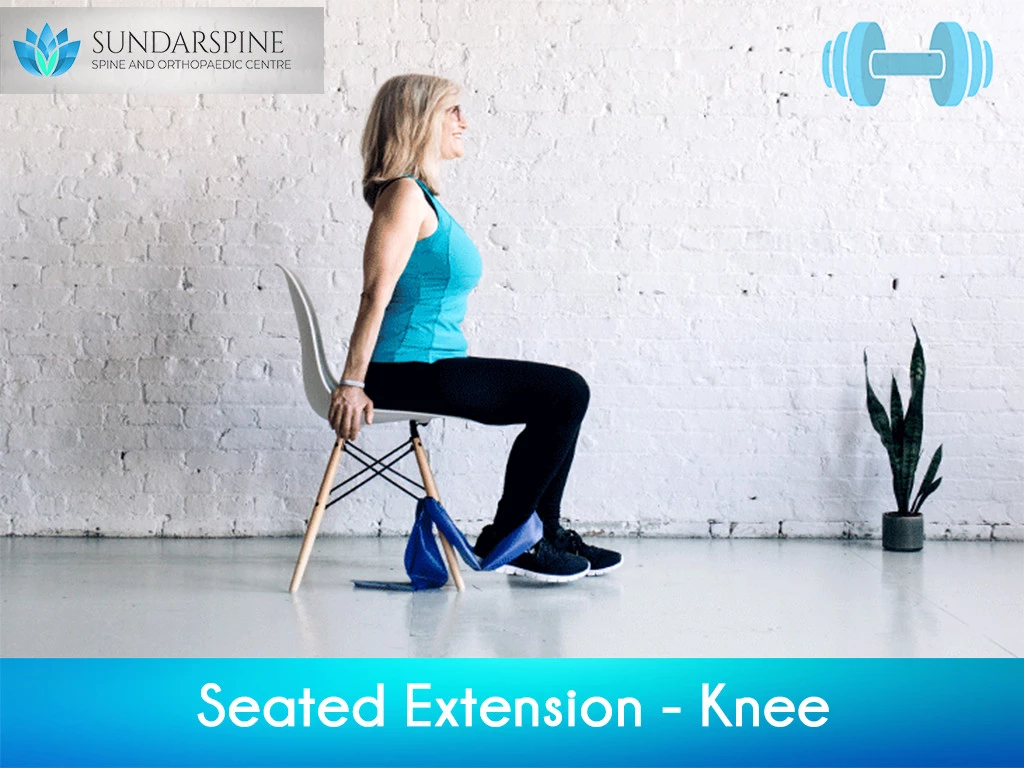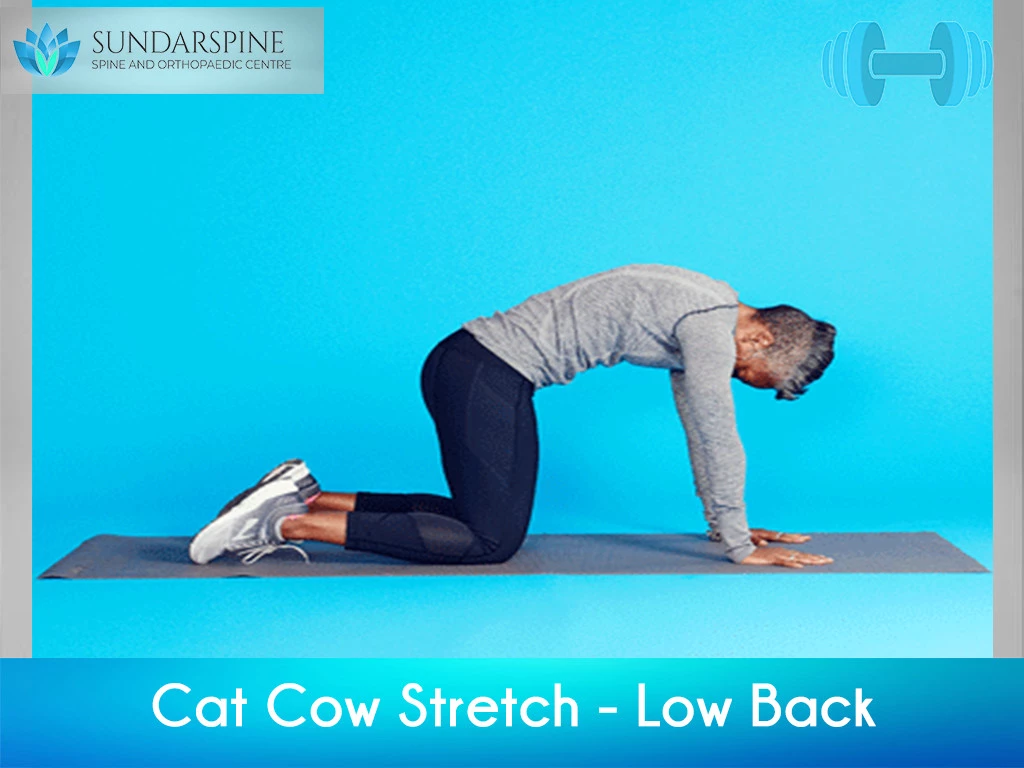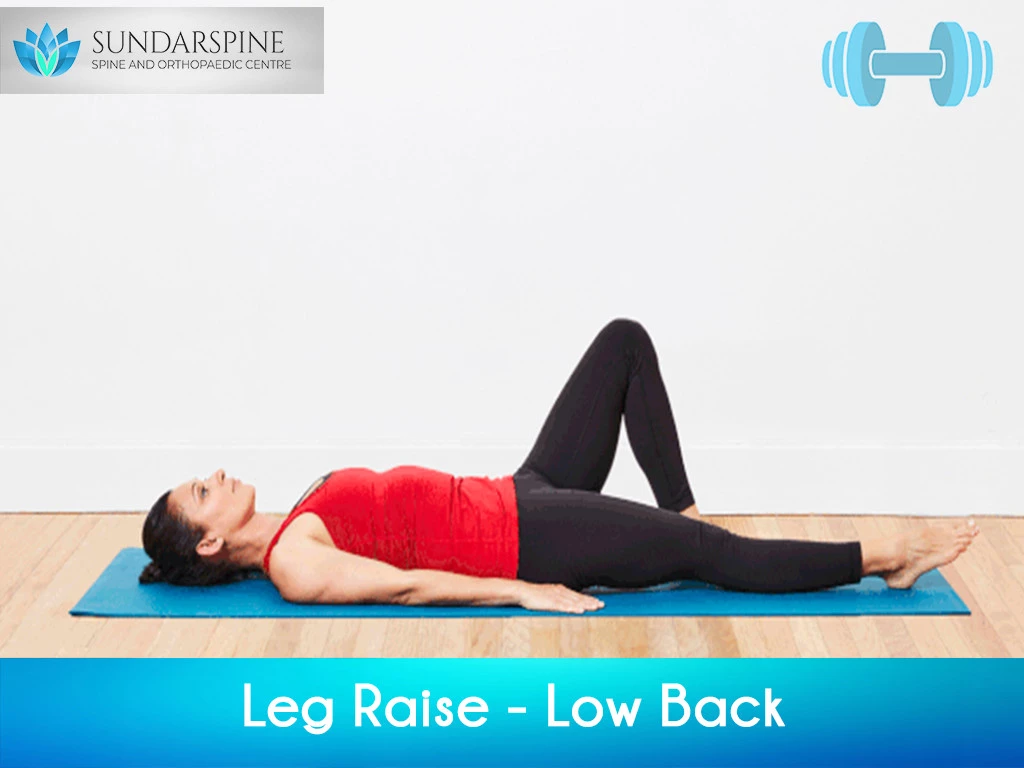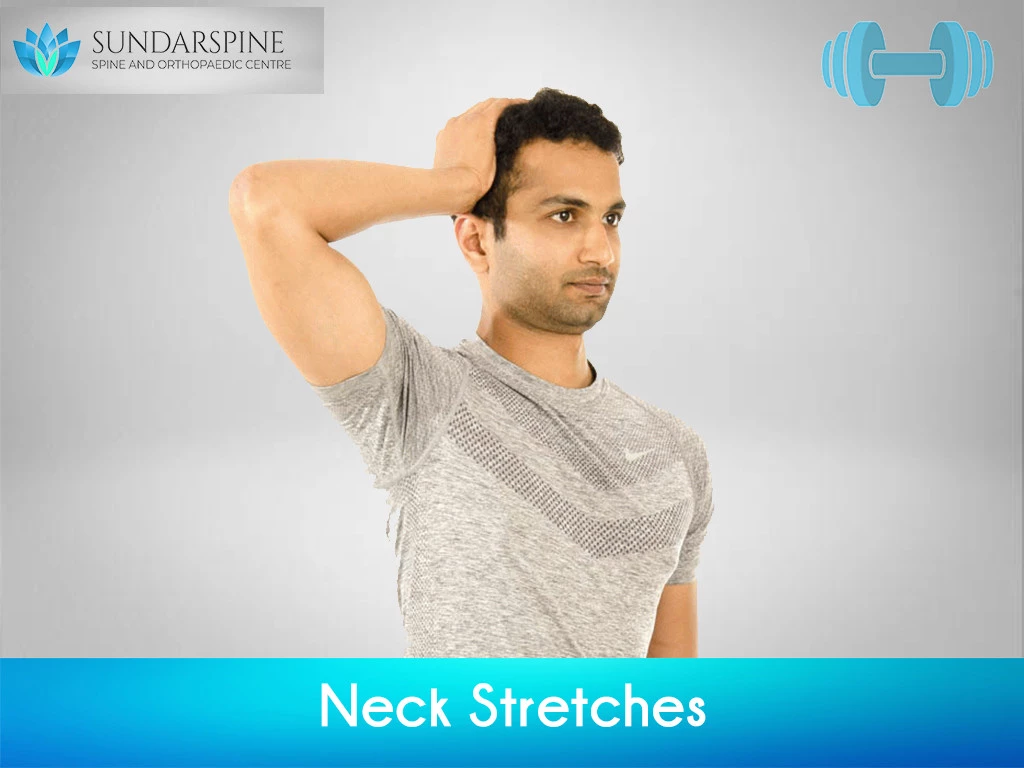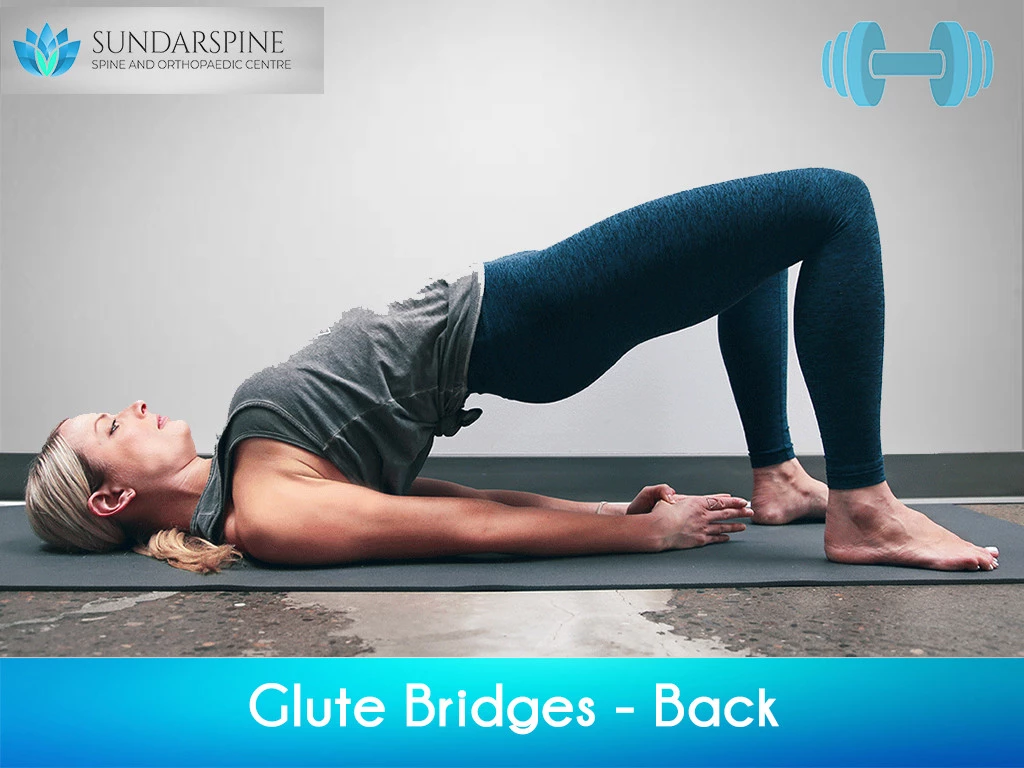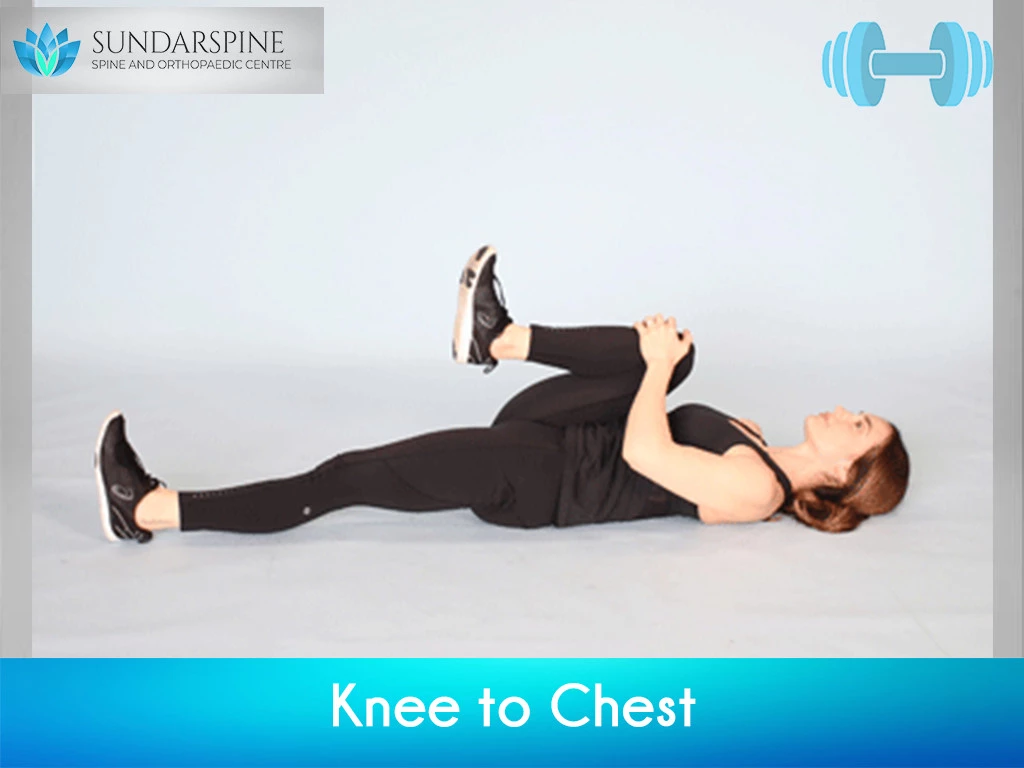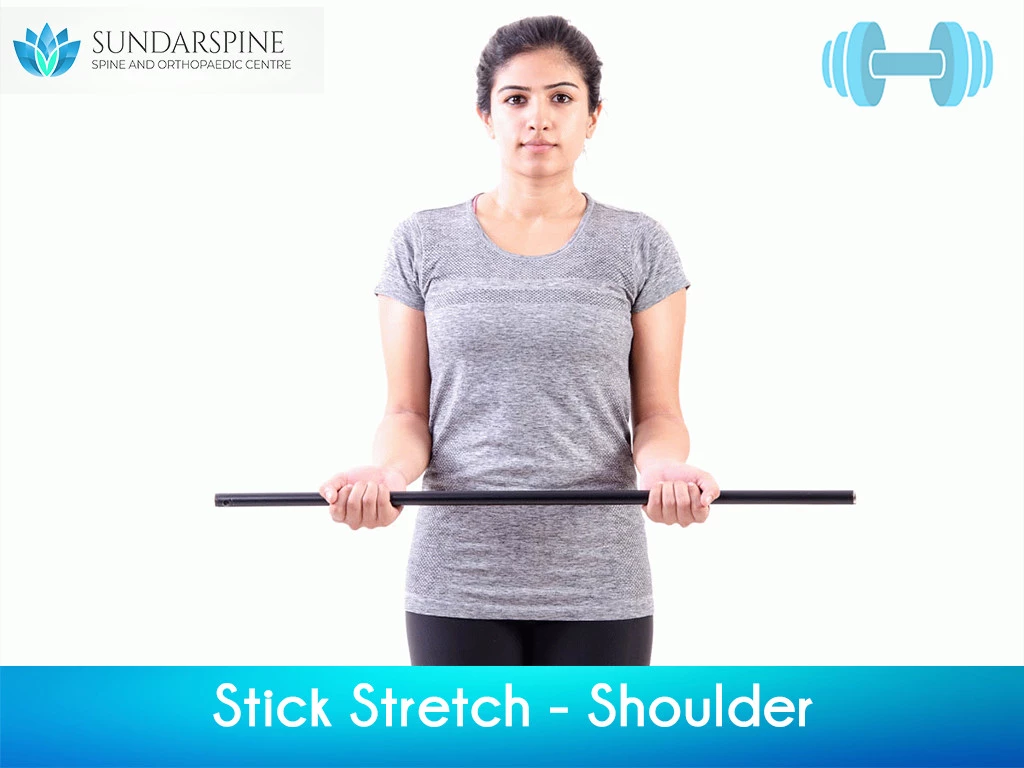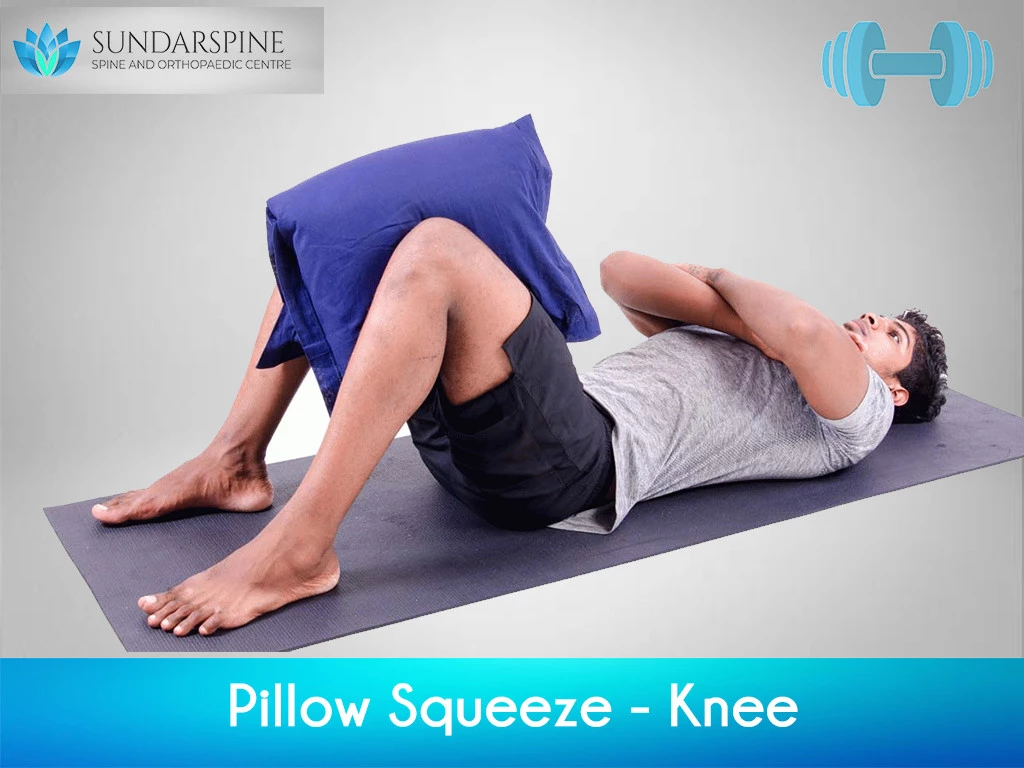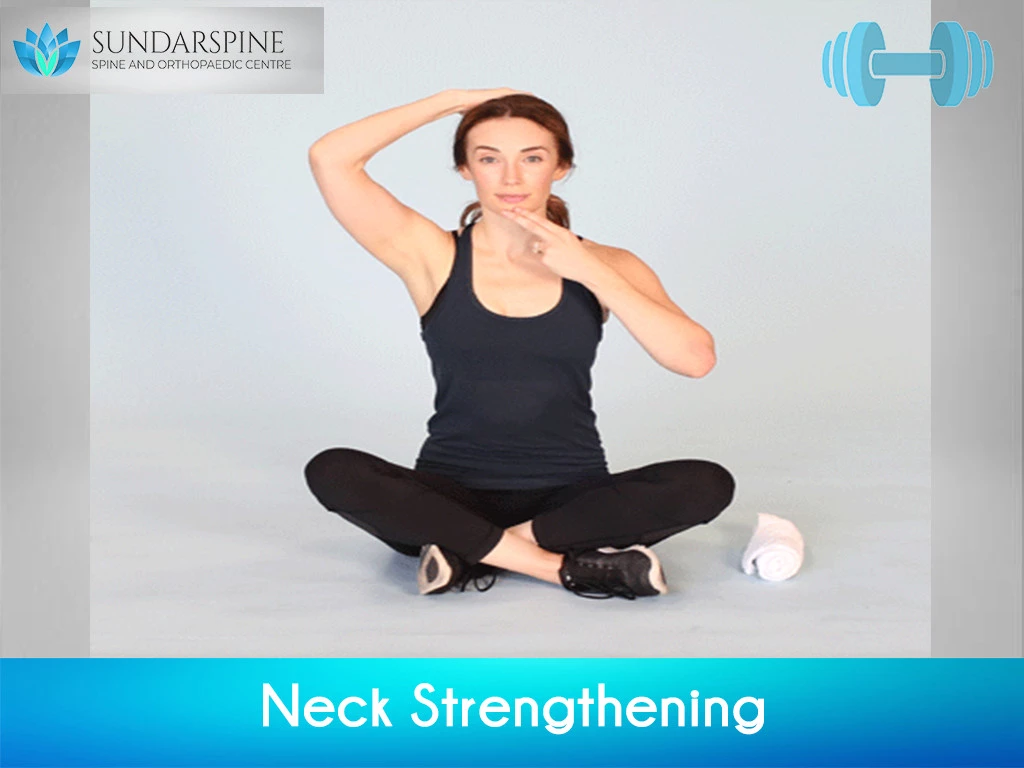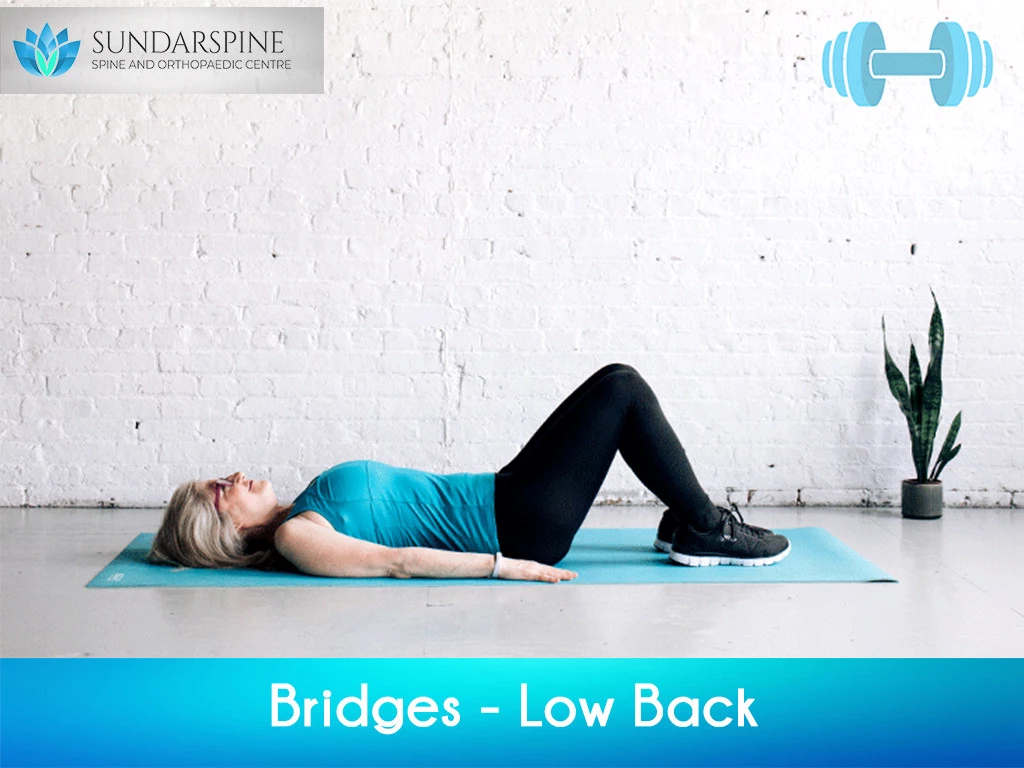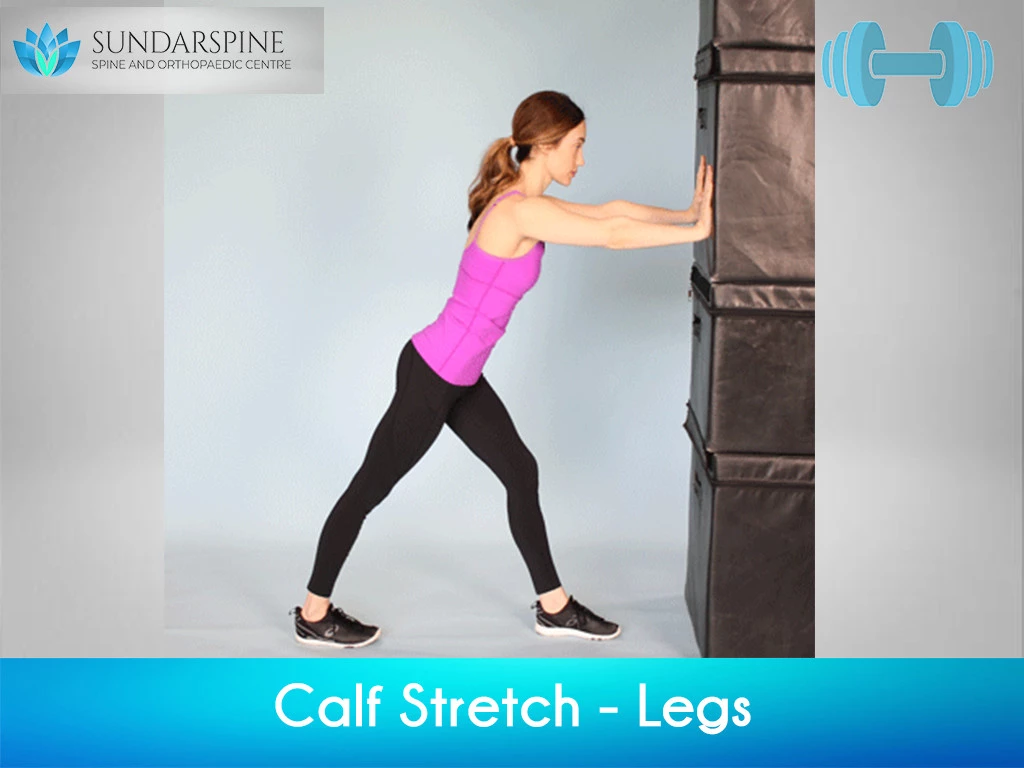Low Back Exercises
Doing exercises to strengthen the lower back can help alleviate and prevent lower back pain. It can also strengthen the core, leg, and arm muscles. Exercise also increases blood flow to the lower back area, which may reduce stiffness and speed up the healing process.
1. Bridges
The gluteus maximus is one of the most important muscles in the body, and keeping it strong can help support the lower back.
To perform a bridge:
- Lie on the ground and bend the knees, placing the feet flat on the floor hip-width apart.
- Press the feet into the floor, keeping the arms by the sides.
- Raise the buttocks off the ground until the body forms a straight line from the shoulders to the knees.
- Squeeze the buttocks with the shoulders remaining on the floor.
- Lower the buttocks to the ground and rest for a few seconds.
- Repeat 15 times and then rest for 1 minute.
- Do 3 sets of 15 repetitions.
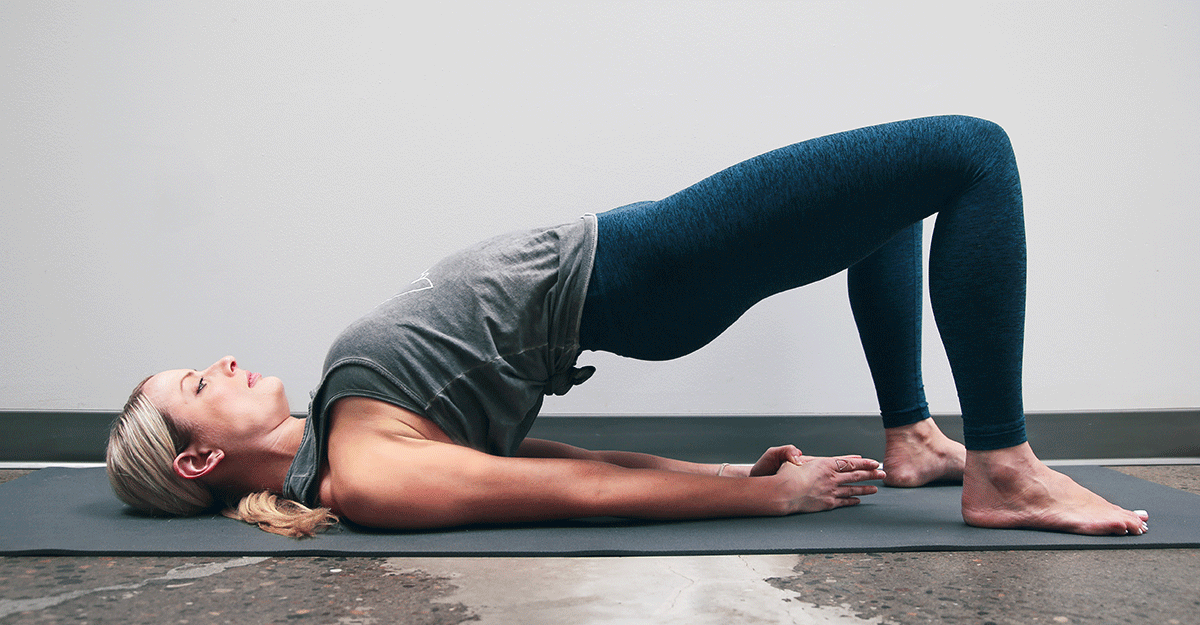
2. Knee-to-chest
Doing a knee-to-chest stretch can help elongate the lower back, relieving tension and pain.
To perform the knee-to-chest stretch:
- Lie on the back on the floor.
- Bend the knees, keeping both feet flat on the floor.
- Use both hands to pull one knee in toward the chest.
- Hold the knee against the chest for 5 seconds, keeping the abdominals tight and pressing the spine into the floor.
- Return to the starting position.
- Repeat with the opposite leg.
- Repeat with each leg 2–3 times twice a day.
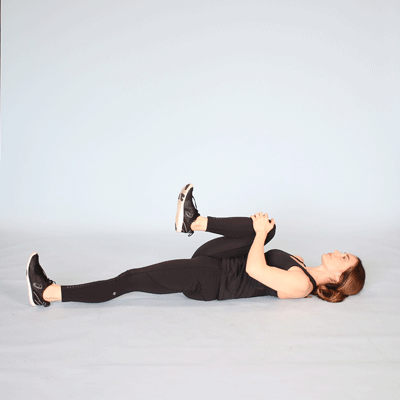
3. rotational stretches
The lower back rotational stretch can help relieve tension in the lower back and trunk. It also gently works the core muscles to improve stability.
To perform the lower back rotational stretch:
- Lie back on the floor with bent knees and feet flat on the ground.
- Keeping the shoulders firmly on the floor, gently roll both bent knees over to one side.
- Hold the position for 5–10 seconds.
- Return to the starting position.
- Gently roll the bent knees over to the opposite side, hold, and then return to the starting position.
- Repeat 2–3 times on each side twice a day.
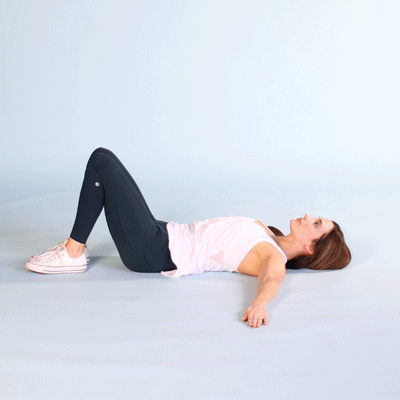
4. Single Leg Raise
The leg lift is a bodyweight exercise that targets muscle groups throughout your body, including the lower and upper abs, hamstrings, quadriceps, hip flexors, and lower back muscles. Perform leg lifts by lying on your back, activating your core, and lifting your legs off the floor. Raise your legs slightly before returning them to the starting position.
To perform the Single Leg-lift maneuver:
- Start by lying face-up on an exercise mat with your legs straight. Place your arms by your sides with your palms facing down or place your hands under your glutes.
- Engage your core as you lift your legs slightly off the ground and point your toes away from your body. All repetitions should begin from this position.
- While maintaining your alignment, lift your legs fully to 90 degrees from your starting position. Pause at the top of the movement.
- While keeping your core engaged and your upper body in contact with the exercise mat, slowly lower your legs until your legs are just above the ground. Come to a complete stop at the bottom of the movement.
- Repeat for 10 times.
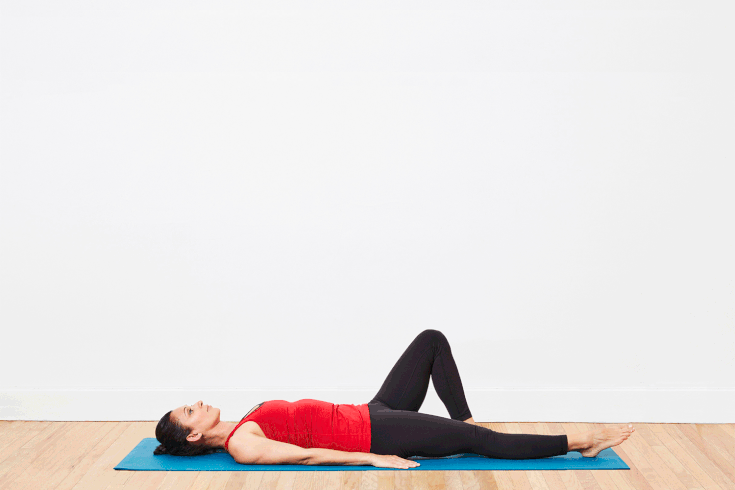
5. Double Leg Raise
Similar to s single leg raise but done with both the legs lifted simultaneously.
To perform this Double leg raise exercise:
- Start by lying face-up on an exercise mat with your legs straight. Place your arms by your sides with your palms facing down or place your hands under your glutes. More hand support needed than single leg raise.
- Engage your core as you lift both your legs slightly off the ground and point your toes away from your body. All repetitions should begin from this position.
- While maintaining your alignment, lift your both legs fully to 90 degrees from your starting position. Pause at the top of the movement.
- While keeping your core engaged and your upper body in contact with the exercise mat, slowly lower your legs until your legs are just above the ground. Come to a complete stop at the bottom of the movement.
- Repeat for 10 times.
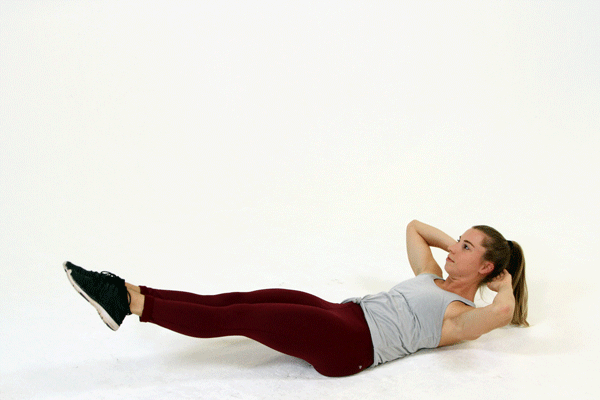
6. lateral leg lifts
Lying lateral leg lifts work the hip abductor muscles. These muscles support the pelvis and can help reduce strain on the back.
Keeping these muscles strong is essential, as they help a person maintain their balance and can affect mobility.
To perform lying lateral leg lifts:
- Lie on one side with the legs together.
- Keep the lower leg slightly bent.
- Draw the bellybutton into the spine to engage the core muscles.
- Raise the top leg about 18 inches, keeping it straight and extended.
- Hold the position for 2 seconds.
- Repeat 10 times.
- Turn onto the other side of the body and repeat, lifting the other leg.
- Perform 3 sets on each side.
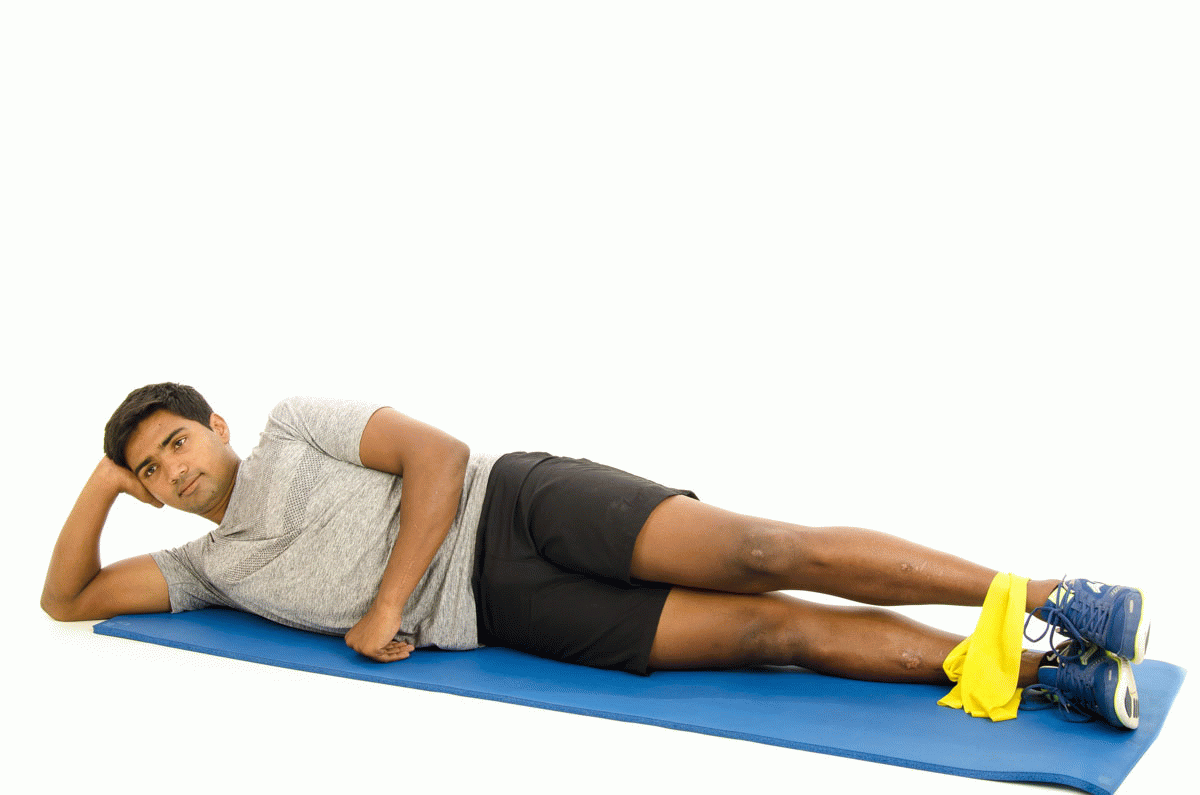
7. Cat-Cow stretches
The cat stretch can help lengthen the back, make it stronger, and ease tension in the muscles.
To perform the cat stretch:
- Get onto the hands and knees with the knees hip-width apart.
- Arch the back, pulling the bellybutton up toward the spine.
- Slowly relax the muscles and allow the abdomen to sag toward the floor.
- Return to the starting position.
- Repeat 10-20 times twice a day
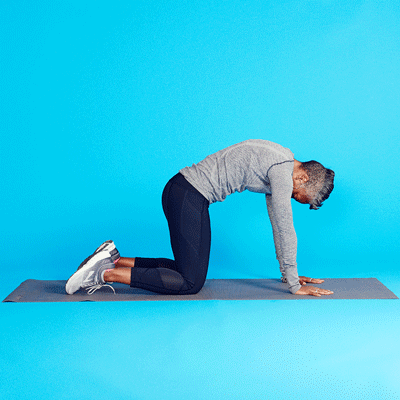
8. Superman
A person needs strong back extensors to maintain good posture. These muscles run along either side of the spine.
Weak back extensors can reduce spinal and pelvic support, but doing an exercise called a “Superman” can help.
To perform a Superman:
- Lie face down on the ground and stretch both arms out in front of the body, keeping the legs stretched out and flat on the ground.
- Raise both the hands and feet, aiming to create a gap of about 6 inches between them and the floor.
- Try to pull in the bellybutton, lifting it off the floor to engage the core muscles.
- Keep the head straight and look at the floor to avoid neck injury.
- Stretch the hands and feet outward as far as possible.
- Hold the position for 2 seconds.
- Return to the starting position.
- Repeat 10 times.
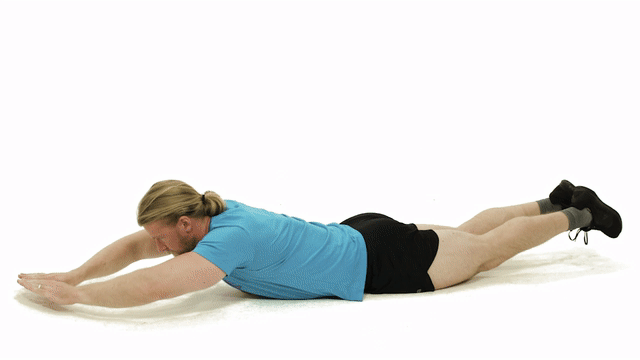
9. Seated stretches
The seated lower back rotational stretch helps relieve pain, working the core muscles and strengthening the lower back.
To perform the seated lower back rotational stretch:
- Sit on a stool or chair without arms, keeping the feet flat on the floor.
- Twist at the core to the right, keeping the hips square and the spine tall.
- Position the hands behind the head or place the left hand on the right knee to support the stretch.
- Hold the position for 10 seconds.
- Repeat the exercise on the left-hand side.
- Repeat on each side 3–5 times twice a day.
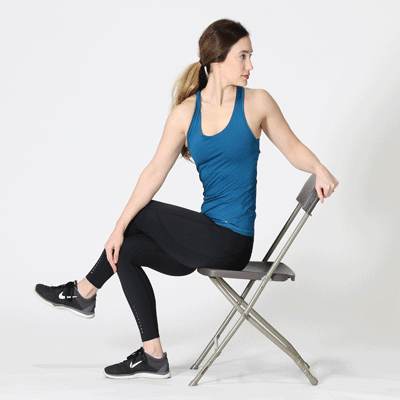
Neck Exercises
To prevent spondylosis and relieve muscle spasm, neck strain
Shoulder Exercises
To prevent and treat frozen shoulder and rotator cuff injury
Low Back Exercises
For low back pain, disc problem and lumbar strengthening
Knee Exercises
To prevent and treat arthritis, heel pain and deep vein thrombosis

Our World, Our Vision
We at SUNDARSPINE, believe in our promise to the world to provide Free access Healthcare Education to everyone. This site is a result of years of Planning and Hardwork. We are dedicated to help in your patient experience and aspire to increase our network globally and include a complete database of all health related information and guidance. We have just begun and we have a long way to go. Thank you in being a part of Us!!
We’d love to hear from you
Have any questions, Checkout
Download a FREE Ebook
Subscribe to our news letter

